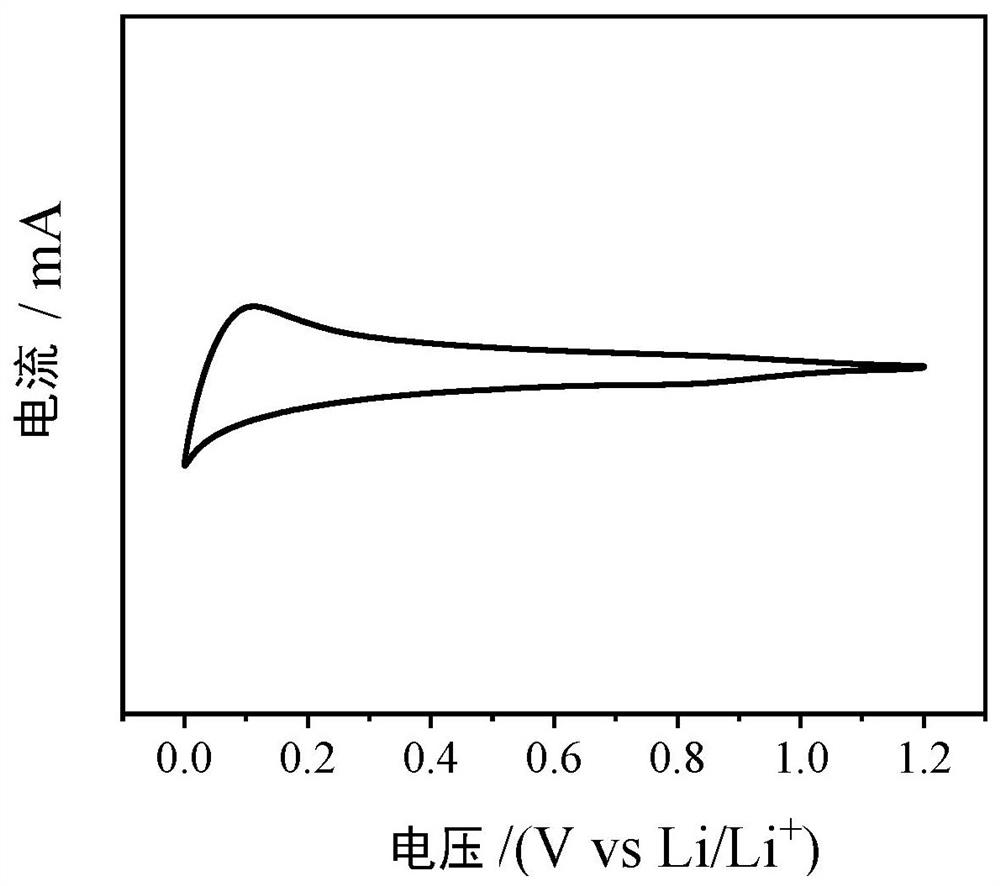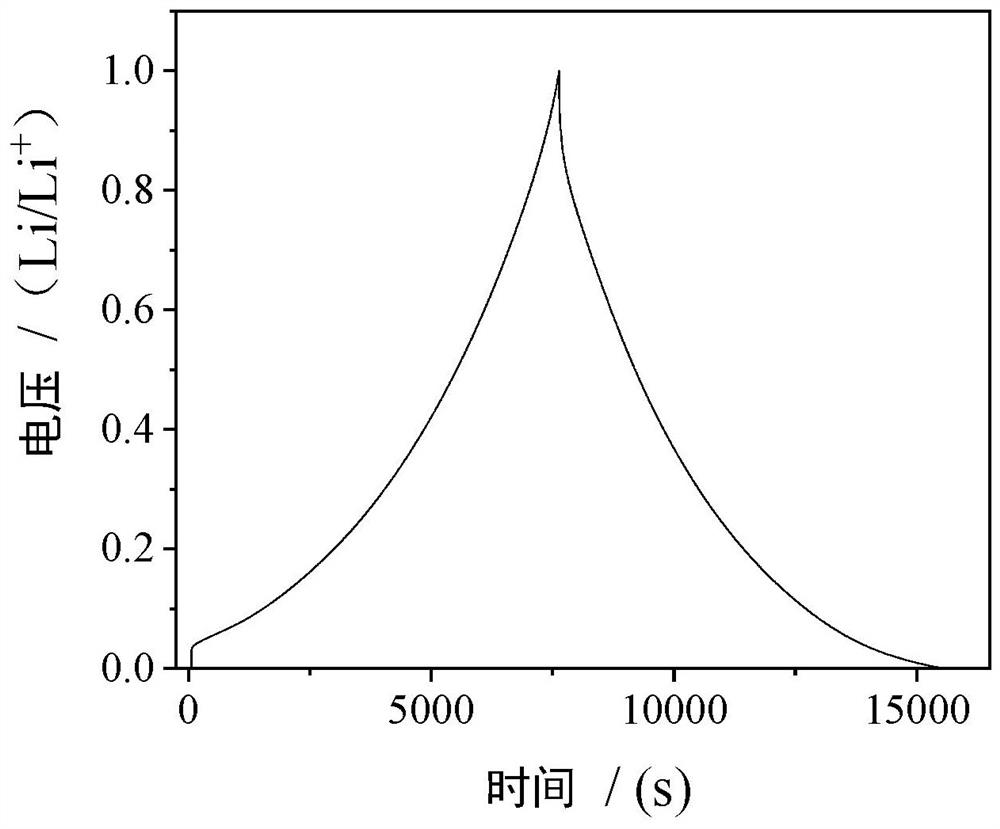A high-capacity lithium battery carbon negative electrode material and its preparation method and application
A carbon negative electrode material, carbon material technology, applied in battery electrodes, negative electrodes, active material electrodes, etc., can solve the problems of battery high rate performance deviation, electrochemical performance attenuation, poor cycle stability, etc., achieve low impedance and improve stability performance, high specific capacity effect
- Summary
- Abstract
- Description
- Claims
- Application Information
AI Technical Summary
Problems solved by technology
Method used
Image
Examples
Embodiment 1
[0035] High-capacity conductive fiber carbon material, sample synthesis:
[0036] Weigh the aramid fiber 1414; put it into a tube furnace for pre-sintering and carbonization. Sintering temperature curve setting in an argon-protected furnace: from room temperature to 500°C at 5°C / min and maintain for 2 hours, then in an argon-protected furnace at 5°C / min to 900°C for sintering temperature and hold for 10 hours , cooled from 900°C to room temperature for 5 hours in an argon atmosphere. Carry out the process of heating up, constant temperature, and cooling according to the curve set above to prepare a high-capacity conductive fiber carbon material.
[0037]Electrical performance test:
[0038] The prepared lithium battery electrodes were measured on the Shanghai Chenhua CHI660D electrochemical workstation using cyclic voltammetry and constant current step method to measure the capacitance value, specific capacitance, energy density and power density. The scan rate of cyclic vo...
Embodiment 2
[0043] High-capacity conductive fiber carbon material, sample synthesis:
[0044] Weigh the polyester; put it into a tube furnace for pre-sintering and carbonization. Sintering temperature curve setting in an argon-protected furnace: from room temperature at 10°C / min to 600°C and maintain for 2 hours, then in an argon-protected furnace at 5°C / min to 800°C for sintering temperature and hold for 10 hours , cooled from 800° C. to room temperature over 5 hours in an argon atmosphere. Carry out the process of heating up, constant temperature, and cooling according to the curve set above to prepare a high-capacity conductive fiber carbon material. The experimental button-type lithium battery was prepared by using the obtained conductive fiber carbon material. For the preparation method and performance test method, see Example 1, and see Table 1 for the performance test data.
Embodiment 3
[0046] High-capacity conductive fiber carbon material, sample synthesis:
[0047] Weigh the vinylon; put it into a tube furnace for pre-sintering and carbonization. Temperature curve setting in the argon-protected sintering furnace: from room temperature 5°C / min to 500°C and keep it for 1 hour, then in the argon-protected furnace 10°C / min to 1100°C sintering temperature and continue to hold for 5 hours, and finally cooled from 1100°C to room temperature in 5 hours in an argon atmosphere. Carry out the process of heating up, constant temperature, and cooling according to the curve set above to prepare a high-capacity conductive fiber carbon material. The experimental button-type lithium battery was prepared by using the obtained conductive fiber carbon material. For the preparation method and performance test method, see Example 1, and see Table 1 for the performance test data.
PUM
| Property | Measurement | Unit |
|---|---|---|
| diameter | aaaaa | aaaaa |
| length | aaaaa | aaaaa |
Abstract
Description
Claims
Application Information
 Login to View More
Login to View More - R&D Engineer
- R&D Manager
- IP Professional
- Industry Leading Data Capabilities
- Powerful AI technology
- Patent DNA Extraction
Browse by: Latest US Patents, China's latest patents, Technical Efficacy Thesaurus, Application Domain, Technology Topic, Popular Technical Reports.
© 2024 PatSnap. All rights reserved.Legal|Privacy policy|Modern Slavery Act Transparency Statement|Sitemap|About US| Contact US: help@patsnap.com










